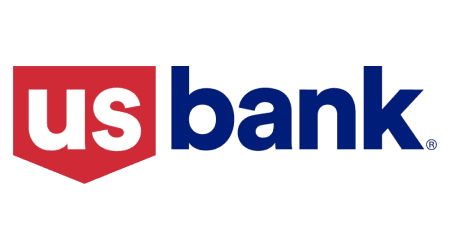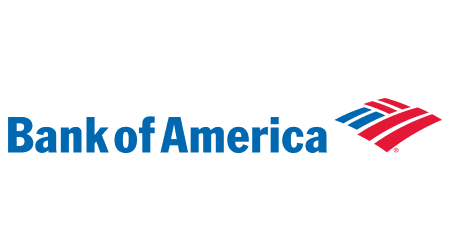U.S. Bank and Bank of America (BofA) are some of the largest banks in the country, each offering a full suite of banking products and services. While both provide plenty of options, they differ in features like interest rates, account variety, branch access and rewards. Here’s a look at what each bank does best to help you decide which one might be the right fit for you.
U.S. Bank vs. Bank of America: A quick comparison
 U.S. Bank |  Bank of America | |
| Bonus |
Both bonuses are subject to certain terms and limitations. | $300 when you open a new eligible checking account online and receive qualifying direct deposits totaling $2,000 or more within 90 days of account opening. |
| Savings |
| Up to 0.04% APY with BofA Advantage Savings account for Preferred Rewards members |
| Checking |
|
|
| CDs |
|
|
| ATMs |
|
|
| Branches | Over 2,000 branches | Approximately 3,800 branches |
U.S. Bank vs. Bank of America: Account options
U.S. Bank and Bank of America are both well-established, FDIC-insured banks with a strong presence across the US — just like their names suggest.
U.S. Bank, founded in 1863, serves millions of customers and operates around 2,000 branches, primarily in the Midwest and West Coast.
Meanwhile, Bank of America has been around since 1904 and boasts a larger network, with roughly 3,800 branches and 69 million customers nationwide. While both banks offer various account options and reliable physical locations, their services vary in terms of accessibility, rates, and features.
Banking
Each bank offers a variety of services, including checking accounts, savings accounts, money market accounts, and certificates of deposit (CDs).
U.S. Bank and BofA also cater to younger customers with student accounts, such as U.S. Bank’s Student Checking and BofA’s Advantage SafeBalance Banking, where students can get monthly fees waived.
U.S. Bank’s checking lineup includes options like the Bank Smartly Checking and Safe Debit accounts, each designed for different needs and offering extra benefits for veterans and students. Benefits can include automatic enrollment in certain tiered rewards, waived service fees, and more. The Bank Smartly Savings account also offers a competitive APY of up to 3.5% if you meet specific requirements, such as maintaining a combined qualifying balance of at least $25,000. Additionally, U.S. Bank provides money market accounts and a variety of CDs, with rates reaching up to 4% APY.
Bank of America’s offerings include the Advantage Banking suite for checking and the Advantage Savings account, which has a modest APY of 0.01% to 0.04%. Bank of America also offers CD options with rates up to 3.75% APY, and customers in the Preferred Rewards program can receive rate boosts and other perks by maintaining higher balances across deposit and Merrill investment accounts.
Borrowing
U.S. Bank and BofA offer a wide range of lending products, though each bank has its own standout options.
U.S. Bank’s borrowing suite includes personal loans for debt consolidation, home improvements, and more, as well as auto loans, mortgages, and lines of credit. U.S. Bank also offers business financing options for small business owners and established enterprises.
BofA also has a lot of lending options, including auto loans, mortgages, home equity lines of credit and business financing. Bank of America’s Preferred Rewards members may also benefit from discounted rates and better terms on many of these loans. However, it does not offer personal loans.
Credit cards
Each bank offers a large selection of credit cards.
Bank of America’s lineup includes popular choices like the Bank of America Customized Cash Rewards credit card and the Bank of America Travel Rewards credit card, both catering to different spending and reward styles.
U.S. Bank also offers standout cards, like the U.S. Bank Cash+ Visa Signature Card, which allows for customizable cashback categories, and the U.S. Bank Altitude Reserve Visa Infinite Card for frequent travelers.
Investing
U.S. Bank and BofA both provide investment services, though they cater to slightly different types of investors.
Bank of America is well-known for its investment options, thanks to its integration with Merrill, its dedicated investment division. Through Merrill, Bank of America customers can access Self-Directed Investing, which offers commission-free trading on stocks and exchange-traded funds (ETFs), along with a range of managed portfolio options. Merrill clients can also open IRAs, benefit from financial advisors, and utilize the Merrill Guided Investing service, which manages investments based on personalized goals.
U.S. Bank also offers accessible investing options through its U.S. Bancorp Investments. Customers can set up traditional and Roth IRAs and brokerage accounts and choose from various mutual funds and other securities.
Apps, features and more
If you want a feature-rich mobile app, either bank is worth considering.
U.S. Bank’s app provides a straightforward way to manage checking and savings accounts, pay bills, and make mobile check deposits. A standout feature is the U.S. Bank Smart Assistant, a voice-activated tool that helps users check balances, transfer funds, and pay bills on the go. The app also integrates with Zelle, offers budgeting tools, and provides credit score monitoring through TransUnion.
BofA’s app offers similar core functionality, like Erica, the virtual financial assistant that helps customers track spending, view account balances, and receive budgeting insights. Customers can also use a customizable dashboard, set up savings goals, monitor credit scores with their FICO score for free, and manage Merrill investment accounts.
How U.S. Bank and Bank of America fees compare
U.S. Bank charges up to $6.95 monthly fees on its standard checking accounts, though it does offer some fee waivers, usually through direct deposit or minimum balance. It also charges a $2.50 fee for out-of-network ATMs, and overdraft fees are $36 per transaction over $5, up to four times per day.
BofA tends to have higher monthly fees than U.S. Bank, such as the $25 maintenance fee on Advantage checking. However, it offers fee waivers. It has the same out-of-network ATM usage fee as U.S. Bank, charging $2.50, but offers ATM fee reimbursements if you’re in its Preferred Rewards program.
What customers say about U.S. Bank and Bank of America
Customer reviews of U.S. Bank and Bank of America are mixed bags. Complaints are similar across the board in terms of customer support and fees.
Both banks face customer service complaints on the Better Business Bureau (BBB) and Trustpilot, with issues like unresponsive support and account frustrations. While rewards and digital tools are highlights, customer service remains a common pain point, which isn’t unusual on review sites for banks of their size.
On Reddit, U.S. Bank gets praise for its digital tools, with customers saying the app works well, the credit cards are solid, and some say it’s fine for a national bank. BofA customers on Reddit are largely nonplussed, saying things like the bank will “grind you down with fees.” A few users call out the Preferred Rewards program, but most note it’s designed for high-net-worth customers.
Final verdict: U.S. Bank vs. Bank of America
These two national banks are better suited for those flush with cash. Earning benefits from BofA’s Preferred Rewards program requires high balances, and fee waivers for either bank often require high direct deposits or lofty balances. Overall, plan on paying monthly maintenance fees for everyday banking.
U.S. Bank has a bit of an edge in savings, offering higher APYs and added benefits tailored to specific groups like veterans, seniors, students, and workplace financial wellness participants. Its Bank Smartly Savings account provides a competitive APY of up to 3.5%, but the requirements to get that rate aren’t what we’d call easy. The checking options are better suited for high-balance customers unless you’re a student or veteran who can waive the monthly fees.
Bank of America stands out for robust investment options through Merrill, making it convenient for those who value both in-person banking and investment services. Its checking options are solid, and its Preferred Rewards program offers perks for customers with high combined balances across their banking and Merrill investment accounts, though its APYs are generally lower than U.S. Bank’s.
U.S. Bank at a glance
U.S. Bank is great for customers seeking higher interest rates, flexible checking options and tailored benefits.
- Competitive APYs
- Smaller CD deposit requirements
- Diverse checking options
- Best perks often require high balances
- High overdraft fees
Bank of America at a glance
Bank of America is ideal for those who value extensive branch access and perks for high-balance customers.
- Merrill investment accounts
- Large branch network across the US
- Preferred Rewards for fee waivers and perks
- Lower APYs compared to U.S. Bank
- High balance requirements for waivers and rewards
- High monthly fees on accounts
Alternatives to U.S. Bank and Bank of America
If U.S. Bank and Bank of America don’t meet your needs, consider these alternative providers. You can also explore more options on our best online banks page.
- SoFi®. SoFi offers an all-in-one online banking experience with no monthly fees, high APYs on savings, and easy access to financial planning tools. It also offers a large variety of lending options, including personal loans and mortgages.
- Chase Bank. Chase is a nationwide bank with a large branch network and a broad range of financial products, including highly rated credit card options and business banking. It’s well-suited for customers who value in-person service and comprehensive offerings.
- Chime. Chime is a fintech company that operates online and provides banking services through its bank partners. It’s known for limited fees, automatic savings features, and a user-friendly mobile app.
See how even more bank accounts stack up:
Ask a question
More guides on Finder
-
Does U.S. Bank Have Zelle?
U.S. Bank does integrate with Zelle without needing the discontinued standalone app. Here’s how to use it for personal and business accounts.
-
Ally vs. Capital One: Which Bank Is Better?
Ally and Capital One have similar APYs and no monthly fees, but Ally is online-only and Capital One has some physical locations.
-
Does Chase Have Zelle?
Chase checking accounts are easy to integrate with payment app Zelle. See how to set it up in 5 simple steps.
-
Does PNC Have Zelle?
PNC is compatible with Zelle and is easy to integrate. See a step-by-step guide on how to use Zelle with your PNC bank account.
-
Does Chime® Have Zelle?
Chime is a fintech company and not a true bank, so it can’t integrate with Zelle. But you can connect your Chime account to the Zelle app.
-
Does SoFi® Have Zelle?
Popular online bank SoFi is one of the only fintechs that works will Zelle, a peer-to-peer money transfer app.
-
Personal Savings Rate: How Much is the Average American Banking?
Data on the personal saving rate in the US.
-
Citi vs. Chase: Which Bank Is Better?
Chase and Citi are banking giants. Let’s see how they stack up against one another.
-
Chase vs. Wells Fargo
Learn more about two of the most popular US banks

